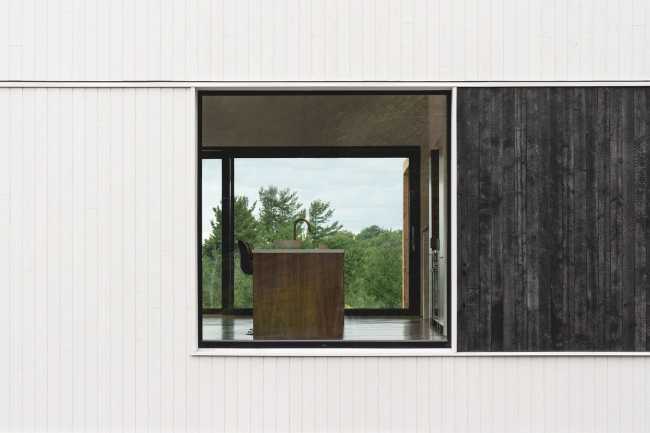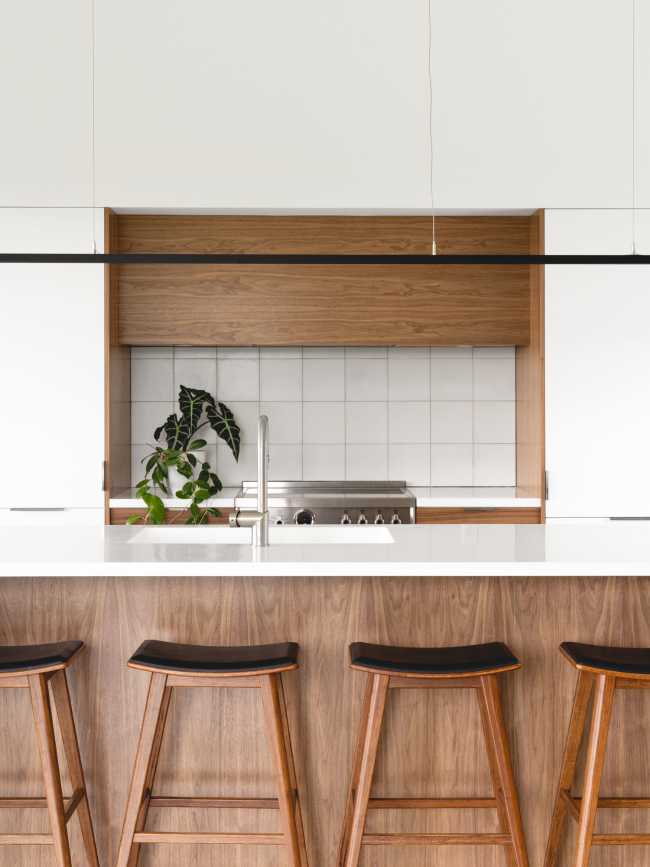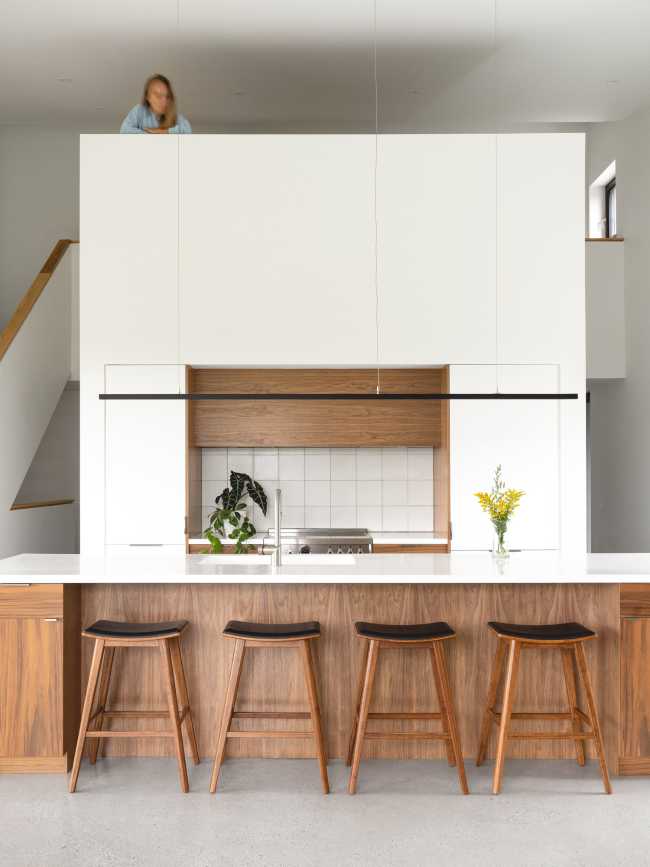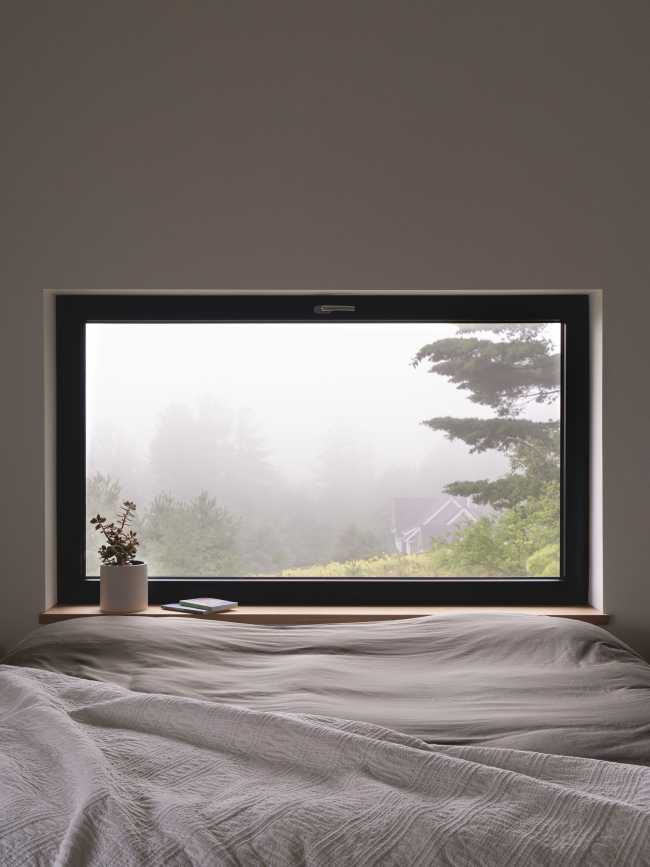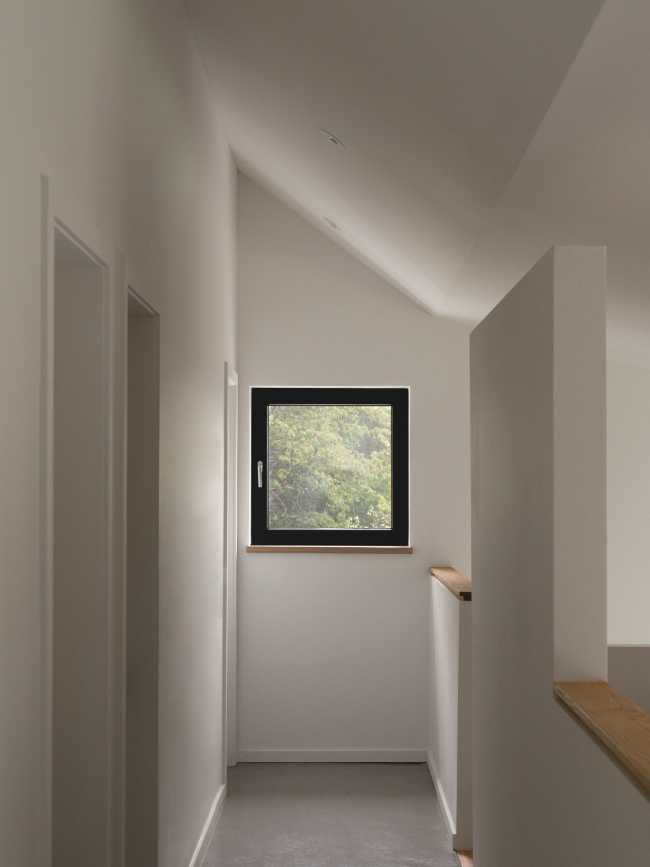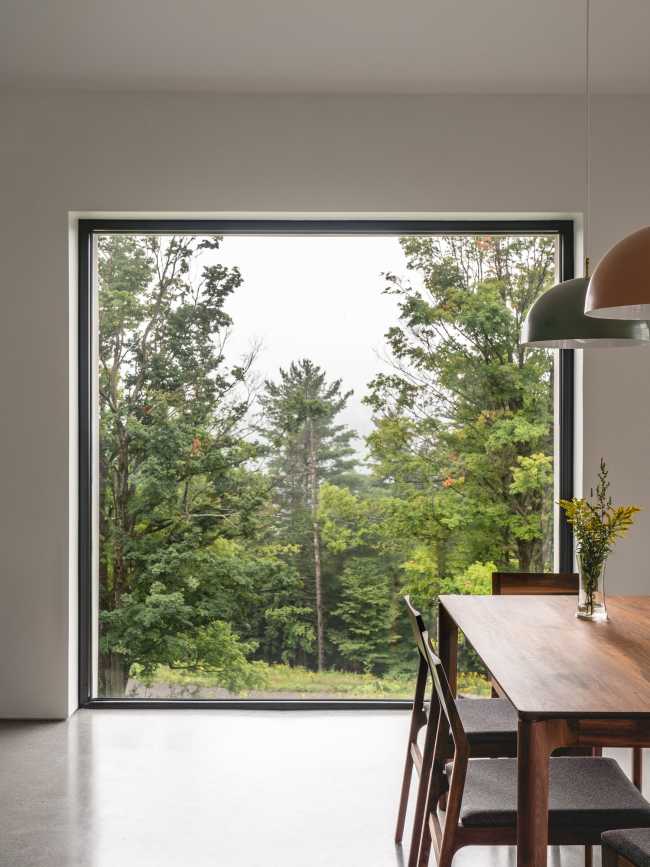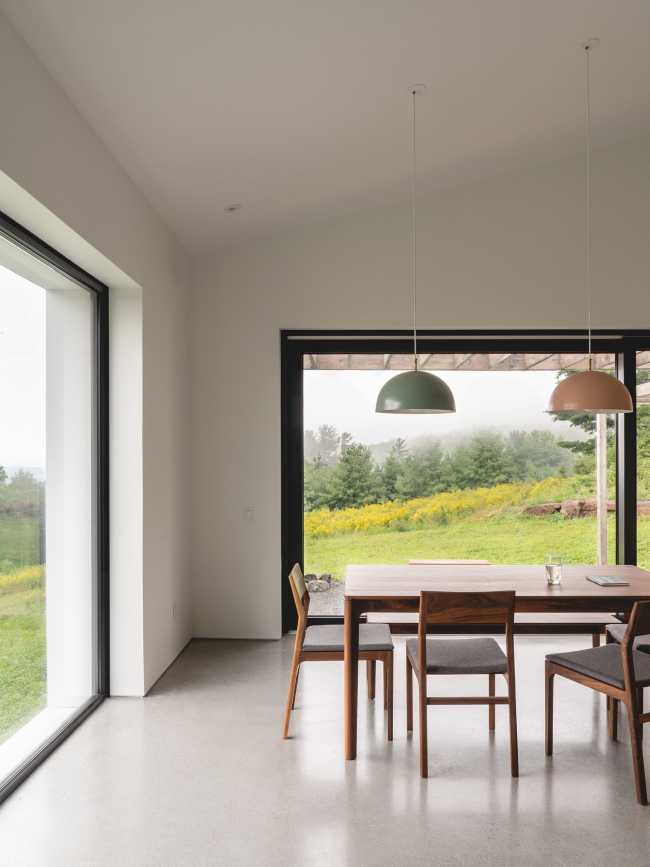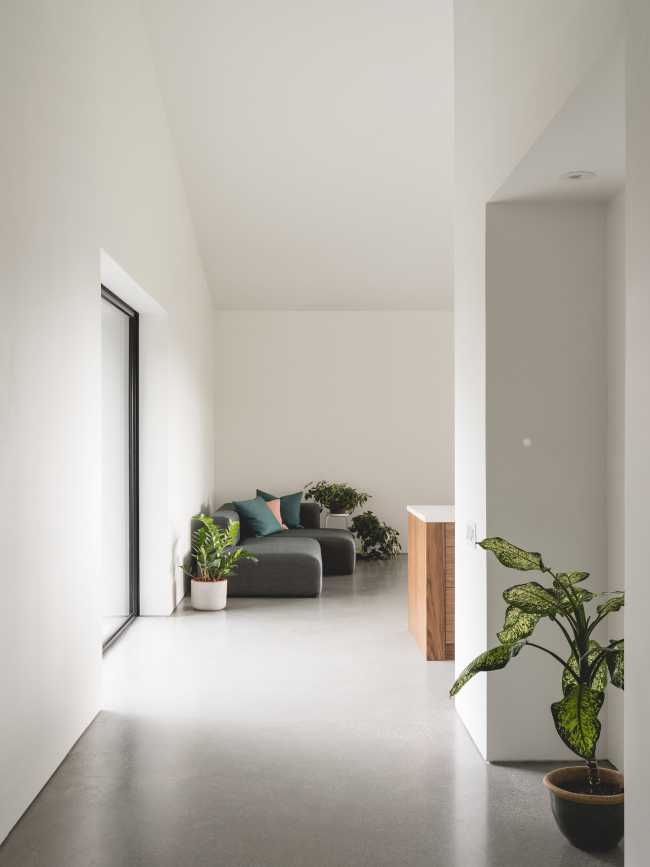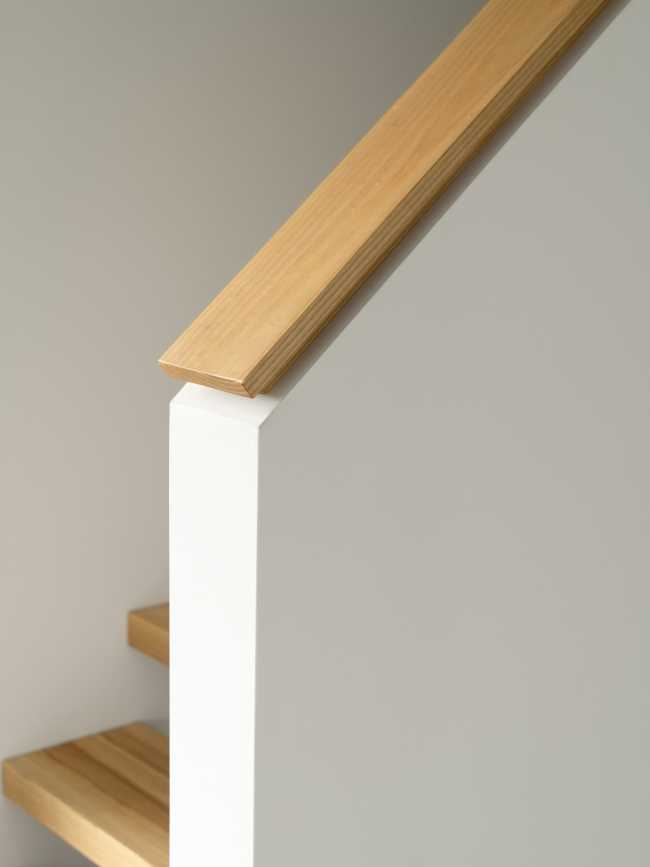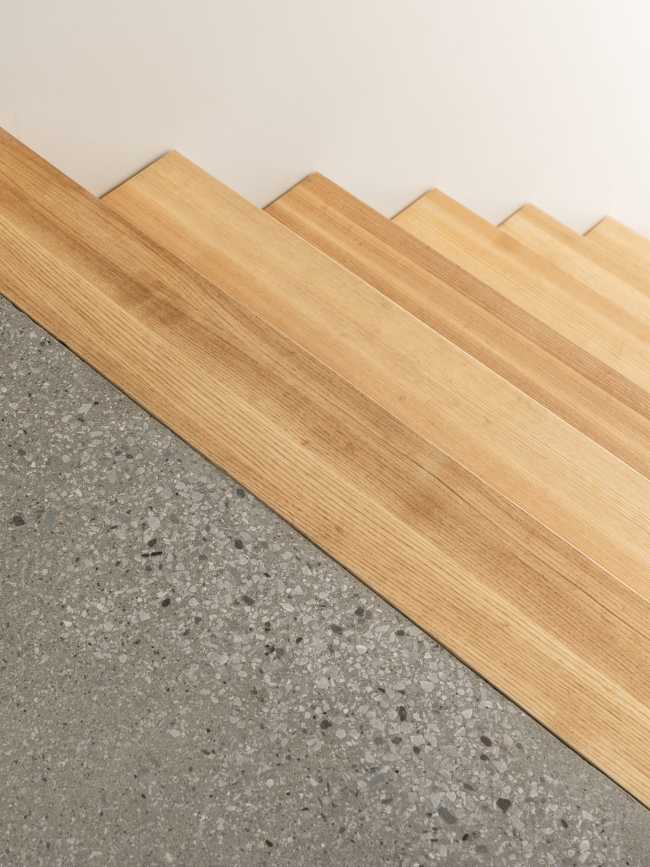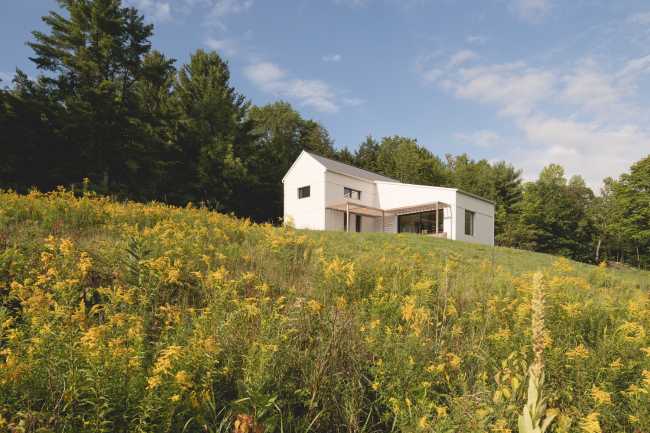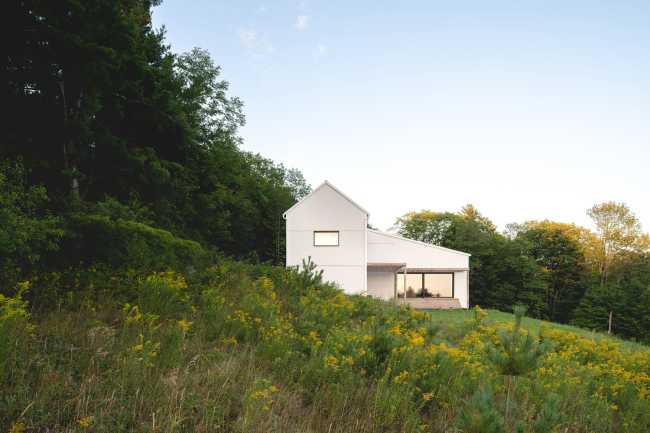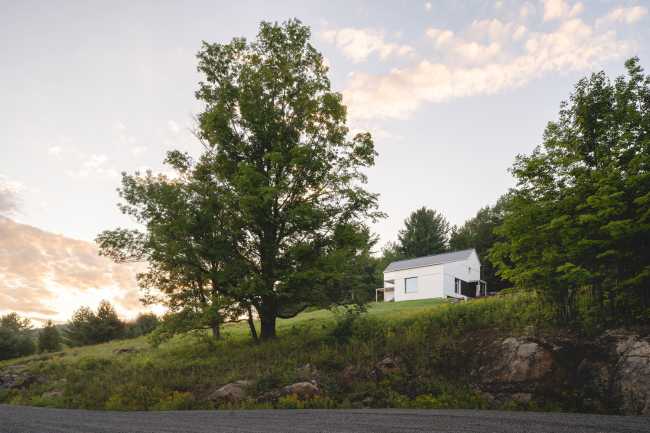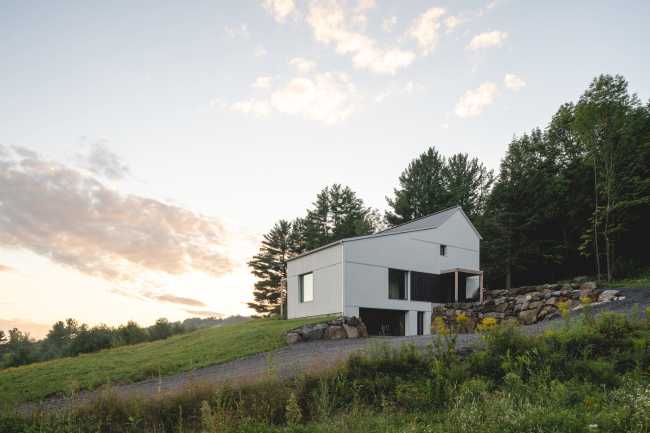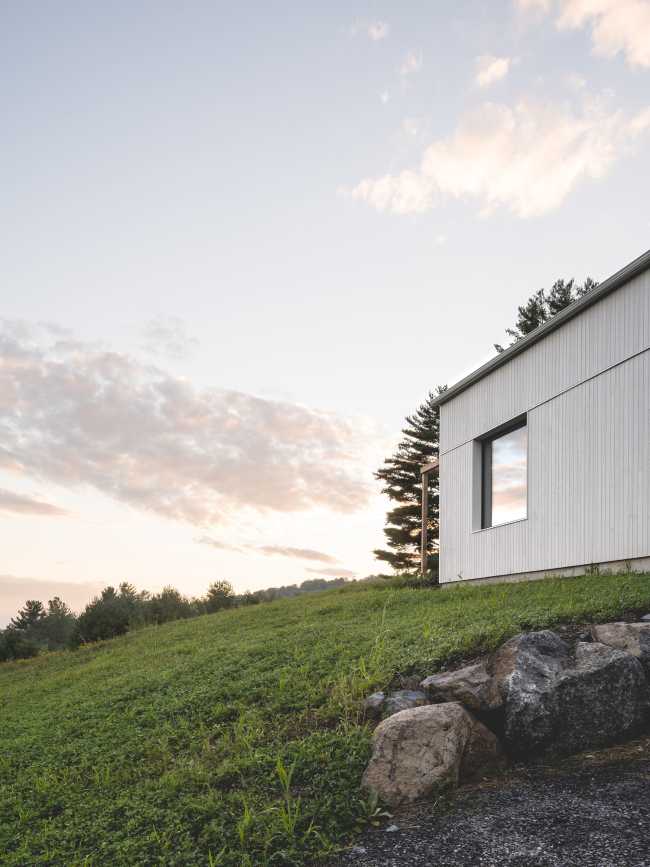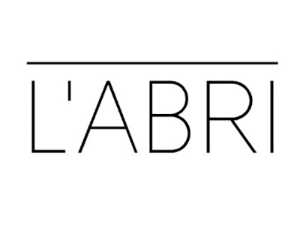The Abri meets the needs of a Canadian family of four who decide to settle in Bromont. Located on the edge of a wooded area, Saltbox Passive House is the third home in Quebec to achieve passive house certification. Both the nature of the site and the influences of local vernacular architecture prompted the designers to think of a house that recalled history in its shapes
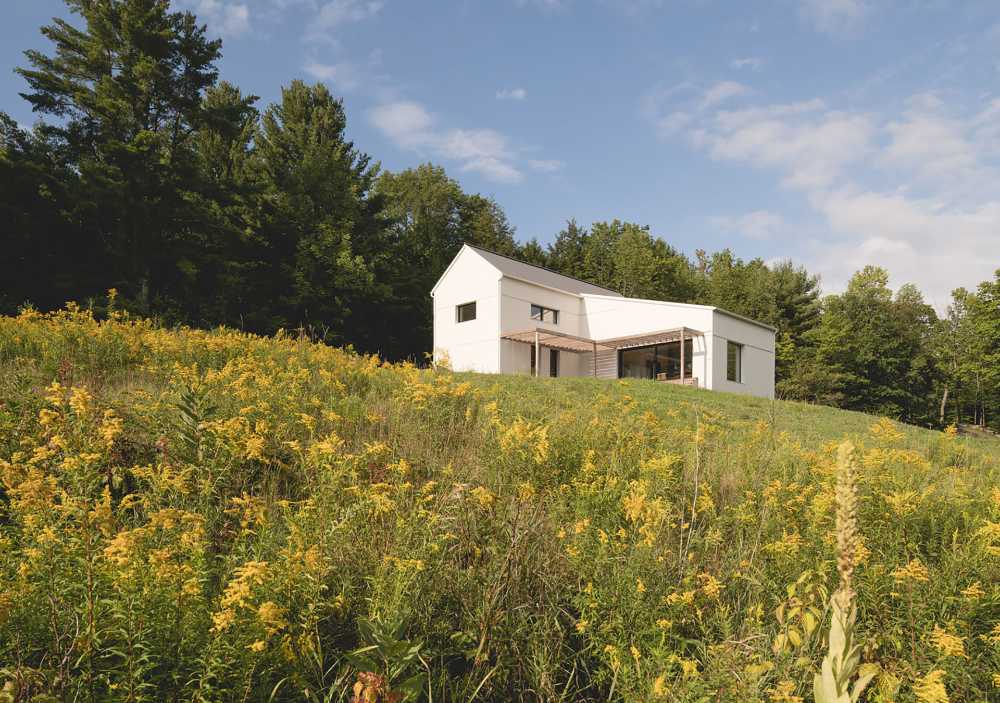

A silhoutte borrowed from the vocabulary of New England rural buildings: Saltbox Passive House
The Saltbox Passive House is a building anchored in its environment, both historically and naturally, and is built with simple, durable materials while being extremely energy efficient
- #America
- #Canada
- #New construction
- #Habitation
- #Metal
- #Wood
- #Glass
- #Stone
- #Architectures
- #Architecture
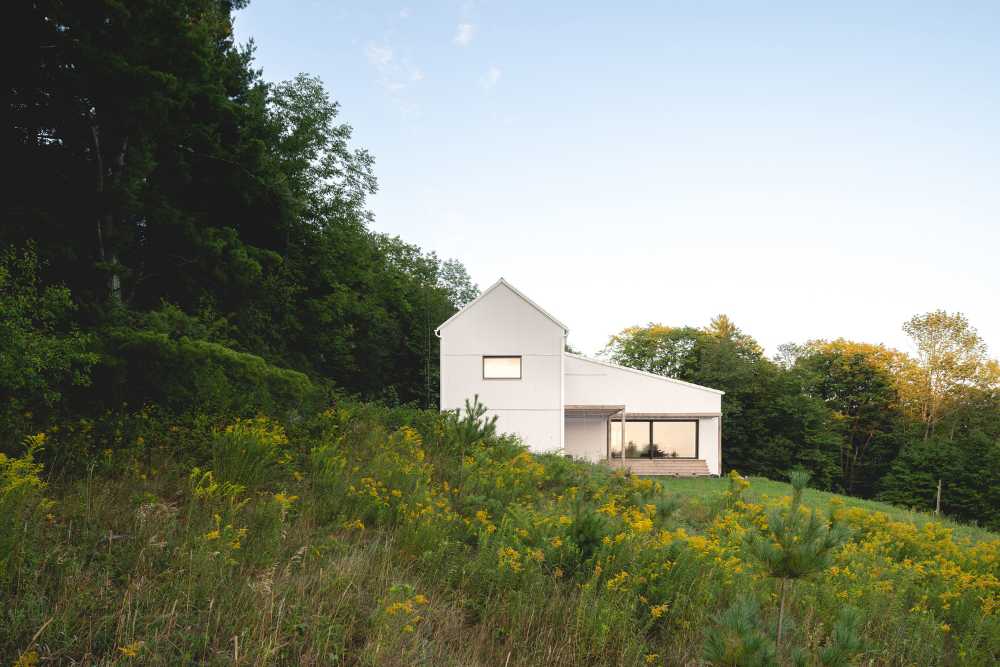
The "L" layout and the combination of two types of pitched roofs are borrowed from the vocabulary of rural Saltbox-type buildings that arose in New England in the 17th century and are still found in the countryside of the Eastern Townships. This colonial style takes its name from the lidded containers where salt was once stored above the hearth in order to keep it dry
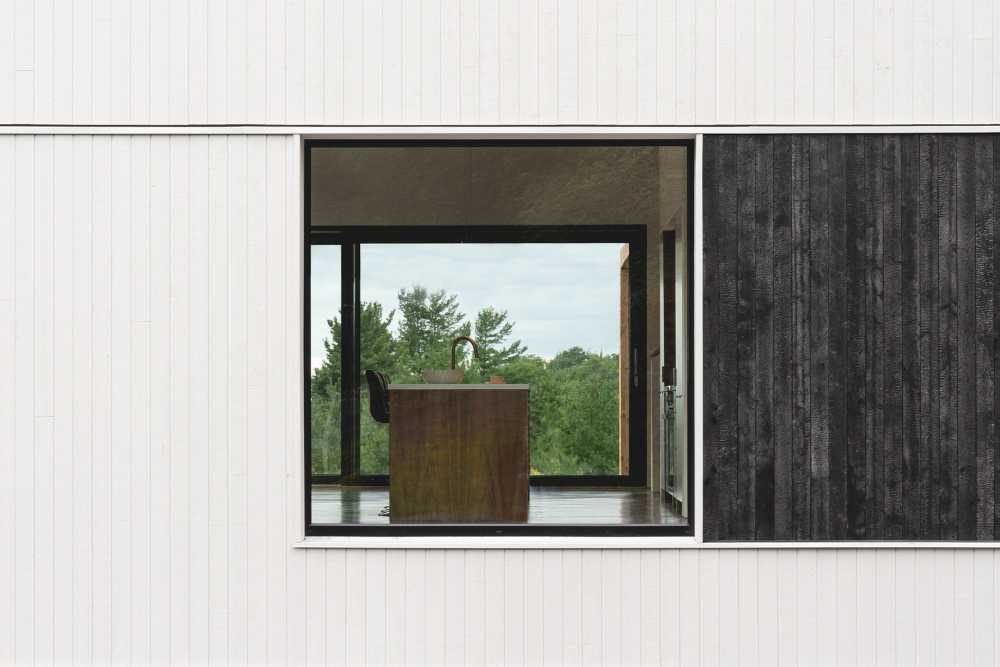
The south-facing house is simple and bright, encouraging passive solar heating and panoramic views of the valley. The double-height space is the true heart of the house, with the other functions arranged all around this central block. The retaining walls are stone, the cladding is wood and the roof is steel
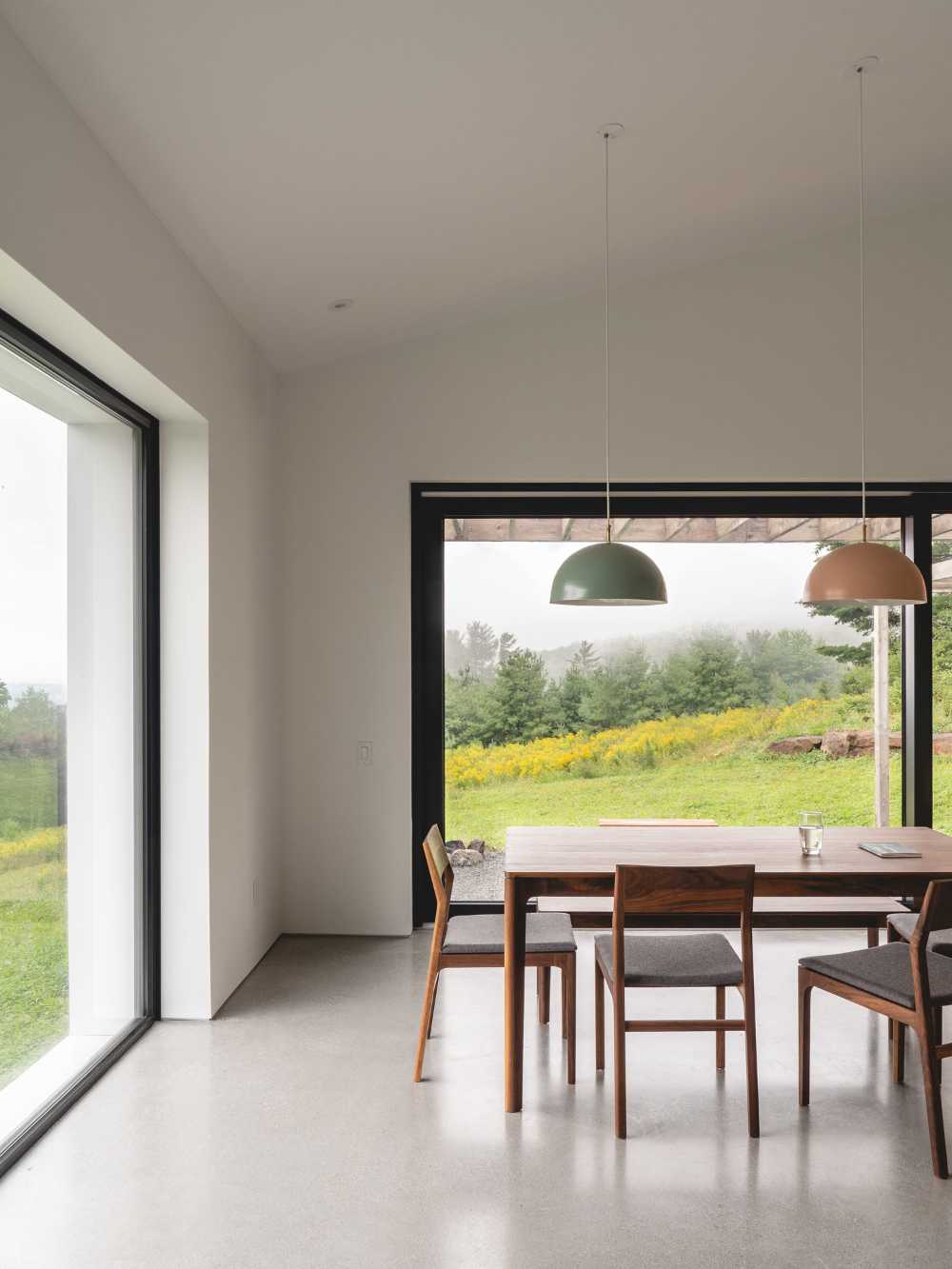
The term Passive House that the project enjoys refers to a high-performance building standard which promotes energy efficiency, comfort and sustainability in buildings. The envelope of the Saltbox Passive House is highly insulated and very airtight, and enjoys heat recovery through a mechanical ventilation system as well as a design that optimizes the orientation and sizing of openings to encourage passive heating of the building
Gallery
Photo credits
Top image, content and gallery images: Raphaël Thibodeau

